Does it matter if a smartwatch is boring as long as it’s good?
That’s the question I’ve been pondering as I tested the Samsung Galaxy Watch 6 over the past couple of weeks. Putting aside the return of the Classic’s snazzy rotating bezel, the mainline model has a minor performance upgrade, a useful display boost, and a modestly thinner design. All welcome changes, but nothing to set the imagination on fire.
With few software changes, a worse battery, and no new health sensors, the Galaxy Watch 6 feels like an iterative update. But since the Galaxy Watch 5 was the best Android smartwatch of the past year, does it make sense to demand Samsung make exciting changes from a template that works? Or should we accept that the Galaxy Watch, like the Apple Watch, won’t change much from year to year now that Samsung has its winning formula?
Perhaps the interesting question is whether or not the return of the Classic will stick. Will people prefer the stylish rotating bezel or miss the epic battery life of the Watch 5 Pro? Because the Galaxy Watch 6’s battery life is one of its more noticeable drawbacks.
Samsung sent me the Galaxy Watch 6 40mm and 47mm Galaxy Watch 6 Classic, so I can give you my impressions of the smallest and largest options in its 2023 lineup. Aside from comparing the capacitive vs. physical bezel experience for navigation, I’ll recommend one display size over the other to help you make your own purchase and help Watch 5 owners decide whether or not it’s worth upgrading.
Samsung Galaxy Watch 6 review: Price and availability
The Samsung Galaxy Watch 6 and Watch 6 Classic launched on July 26 and went on sale on August 11, 2023. The standard Galaxy Watch 6 comes in 40mm ($299/£289) and 44mm ($329/£319), while the Galaxy Watch 6 Classic ships in 43mm ($399/£369) and 47mm ($429/£399).
All four sizes offer a $50 4G LTE upgrade, with support for Verizon, AT&T, T-Mobile, Sprint, and USCellular in the U.S. So your cellular pricing will range from $349/£339 to $479/£459 depending on which size you choose.
Samsung is offering a $50 instant trade-in credit or up to $250 off with an eligible smartwatch trade-in for the Galaxy Watch 6, with the best value for the Apple Watch Series 8 ($250) or Galaxy Watch 5 Pro ($200). Outside of Apple and Samsung, other watch brands like Fossil and Garmin get you just $50 credit no matter how much you paid for them.
Samsung Galaxy Watch 6 review: Watch 6 vs. Watch 6 Classic
Before we dive into this Samsung Galaxy Watch 6 and Watch 6 Classic review, I want to explain upfront why we chose to cover both in one review instead of breaking them apart: they’re so similar that writing two reviews would be needlessly repetitive.
| Category | Samsung Galaxy Watch 6 | Samsung Galaxy Watch 6 Classic |
|---|---|---|
| Display | 1.3-inch (432 x 432), 1.5-inch (480×480) Super AMOLED | 1.3-inch (432 x 432), 1.5-inch (480×480) Super AMOLED |
| Processor | Samsung Exynos W930 (1.4GHz) | Samsung Exynos W930 (1.4GHz) |
| RAM | 2GB | 2GB |
| Storage | 16GB | 16GB |
| Battery | 300mAh / 425mAh | 300mAh / 425mAh |
| Wireless charging | Yes | Yes |
| Sensors | Samsung BioActive Sensor (Optical Heart Rate + Electrical Heart Signal + Bioelectrical Impedance Analysis), Temperature Sensor, Accelerometer, Barometer, Gyro Sensor, Geomagnetic Sensor, Light Sensor | Samsung BioActive Sensor (Optical Heart Rate + Electrical Heart Signal + Bioelectrical Impedance Analysis), Temperature Sensor, Accelerometer, Barometer, Gyro Sensor, Geomagnetic Sensor, Light Sensor, 3D Hall sensor |
| Connectivity | LTE (optional), Bluetooth 5.3, Wi-Fi 2.4/5GHz, NFC, GPS/ GLONASS/ GALILEO/ Beidou | LTE (optional), Bluetooth 5.3, Wi-Fi 2.4/5GHz, NFC, GPS/ GLONASS/ GALILEO/ Beidou |
| Durability | 5ATM, IP68, MIL-STD-810H | 5ATM, IP68, MIL-STD-810H |
| Materials | Aluminum, Sapphire Crystal Glass | Stainless Steel, Sapphire Crystal Glass |
| Dimensions | 38.8 x 40.4 x 9.0 mm; 42.8 x 44.4 x 9.0 mm | 42.5 x 42.5 x 10.9 mm; 46.5 x 46.5 x 10.9 mm |
| Weight (w/out strap) | 28.7g; 33.3g | 52g; 59g |
| Colors | Graphite, Gold (40mm); Graphite, Silver (44mm) | Black, Silver (43mm, 47mm) |
As you can see from the specs table above, the Galaxy Watch 6 and 6 Classic resemble one another in almost every way. They share the same performance, memory, display sizes and quality, protective features, battery capacity, and health sensors.
The $100 surcharge you pay for the Classic is entirely for the rotating bezel — which is tracked via the unique 3D Hall sensor — the upgrade from aluminum to stainless steel, and the more “classic” look. You also have to accept the significantly heavier weight and fewer colors as trade-offs.
Outside of the Design and Display sections, my Watch 6 and Watch 6 Classic reviews would read nearly identically. So I’m saving you some time and merging the two.
Samsung Galaxy Watch 6 review: Hardware and design
- The new Exynos chip and extra RAM gives a modest but useful upgrade
- The Watch 6 Classic’s rotating bezel is satisfying to use, if you can accept the heavier, thicker design
- Samsung improved the Watch 6’s capacitive bezel compared to the last generation
- My favorite watch band is Samsung’s Hybrid Leather T
After using the same Exynos W920 chip and 1.5GB of RAM for the last two watch generations, Samsung gave the Galaxy Watch 6 a minor upgrade with the Exynos W930. It has the same Cortex-A55 dual-core processor, only clocked to 1.4GHz, up from 1.18GHz. And it runs off of 2GB of RAM instead of 1.5GB.
Looking in the Galaxy Wearable app’s watch settings, I find that, by default, the Watch 6 uses over half of its memory while idle, climbing to about 1.4GB of RAM with about a dozen core background apps. I haven’t yet made the watch reach its full capacity, and I rarely see any slowdown except for when the watch first wakes up.
I brought out my Galaxy Watch 5 Pro to see how much of a performance gap the new Exynos offers. On the surface, it’s really not much. I called its speed “blazing” last year, and it still opens up apps and glides through Tiles with almost no lag. But there are noticeable moments when, for instance, you scroll through Tiles with the capacitive bezel, and it takes a second for the watch to catch up, leaping through a few apps at once.
With the Galaxy Watch 6, apps open ever-so-slightly faster, and when you scroll through apps, things look less jittery because it properly shows the transition as one app leaves the screen and another appears. It’s only a minor difference, but on the Watch 6 in particular, it makes using the capacitive bezel much easier; you know immediately how far you’ve scrolled, so you don’t overshoot a particular app.
Compared to the Galaxy Watch 5, the Watch 6 design is slightly skinnier than before. It’s not actually 9mm, just like the Watch 5 wasn’t 9.8mm thick. Samsung measures its watches without taking the health sensor into account as if you could just take that off if you wanted. In truth, the Watch 6, Watch 5, and Watch 6 Classic are about 12mm, 13mm, and 15mm thick, respectively.
The Galaxy Watch 6 40mm still has that hard-edged cylindrical look. Even though it’s slimmer than ever, it still looks a bit thick because it doesn’t have soft, tapered edges like an Apple Watch. But it feels positively lightweight compared to the fitness watches I’m used to, and Samsung deserves credit for trending thinner while adding more power under the hood — even if it’s honestly not the most attractive watch.
Like the Watch 5, the Galaxy Watch 6 has military-grade protection against shock damage, IP68 water and dust resistance, and Sapphire Glass display protection. It’s not something I want to test with review unit, but as always, it’s a relief to know your watch should withstand minor knocks and splashes from everyday life.
Then you have the Galaxy Watch 6 Classic. The textured rotating bezel adds a bit of class to its look, with the added bonus of sitting above the display and protecting it from light scratches — whereas the fully flat Watch 6 relies fully on its Sapphire Glass material.
That being said, the Classic is both heavy and noticeable on your wrist, about on par with the Garmin watches I wear regularly. It looks a lot nicer than a plastic-heavy Garmin watch, thanks to the stainless steel case, but it also weighs a lot more.
As cheesy as it sounds, the Galaxy Watch 6 Classic looks hella classy. But keep the receipt if you buy one, in case you decide you can’t handle the weight. That especially applies to the 47mm model, which gives you a ton of display space.
As a final point, I much prefer the Hybrid Leather T band that comes with the Watch 6 Classic to the standard Sport band on my Watch 6. Every time I put on the Watch 6 and have to shove the band into the loop, tugging at my arm hair, I get annoyed. By contrast, the hybrid leather feels nicer on my skin than silicone, and adjusting the fit with a T band is much easier. I recommend picking that option if you can.
Capacitive bezel or physical bezel?
I never thought I’d say this after disliking the capacitive bezel so much on the Watch 5 Pro. But somehow, Samsung seems to have made the Galaxy Watch 6’s digital bezel much more useable.
I expected the opposite because the newly enlarged display leaves a smaller border edge for you to slide your finger. But along with the more responsive Exynos chip — and the comfortable haptics that lightly buzz your wrist whenever you’ve slid to the next Tile — the bezel’s touch recognition just seems to work better than I remember. You can slide your fingertip right along the bottom edge and get an instant response, mostly leaving your view of the display intact.
It isn’t a perfect solution. It requires you to concentrate and be very deliberate, making it more distracting than just turning a digital crown or physical bezel. And it’s unreliable during workouts when your fingers get sweaty. But it’s not as much of a downside as we described it in our Watch 5 review.
The real star of the show is, of course, the rotating bezel, now 15% thinner than the one on the Watch 4 Classic.
As good as Samsung’s capacitive hack is, it can’t compete with the real thing for accuracy, with a satisfying, barely audible click every time you turn it to the next Tile or menu. The amount of resistance ensures you don’t accidentally turn it too far, either.
Some people may still prefer the capacitive bezel because it has a familiar touchscreen-esque control scheme and because you can use one finger to scroll quickly instead of two fingers to turn the rotating bezel in deliberate motions. Plus, the Classic watches are so much heavier, making the 47mm model especially unsuitable for smaller wrists.
But if you don’t mind heavier watches, the rotating bezel gives the Watch 6 Classic a sleek look and a control scheme you can always rely on. For people upgrading from the Watch 5 (which is so similar to the Watch 6), the bezel is one of the only reasons to upgrade.
Otherwise, if you prefer the Watch 6’s more sporty look and lower price, the capacitive downgrade isn’t as bad as I feared.
Samsung Galaxy Watch 6 review: Display
- Narrower borders make the Watch 6 displays look better than ever
- The 1.3-inch model gives you more screen real estate than typical small watches offer
- The 1.5-inch model is too heavy for some but is a visual treat
- The doubled brightness score makes the Watch 6 fully visible in direct sunlight
Both the Galaxy Watch 6 and Watch 6 Classic have two AMOLED display size options: 1.3 inches with a 432 x 432 resolution or 1.5 inches with a 480 x 480 resolution.
Compared to the last generation, the pixels-per-inch ratio is essentially the same. The difference is that Samsung shrunk the display border by 30%, using the space more efficiently. There’s now only about a millimeter of unused space left on the Watch 6; on the Watch 6 Classic, that space is mostly covered up by the rotating bezel, so it looks like the text goes right up against the edge.
Another change is that the Watch 6 hits a max of 2,000 nits of brightness outdoors, twice as bright as the 1,000-nit standard we’ve seen on most Android smartwatches.
All in all, these watches are bright but adaptable to your surroundings, easily readable thanks to the dense pixel ratio, and with a pleasantly skinny border that puts the Pixel Watch to shame.
The only real question is, should you buy a 1.3-inch Galaxy Watch 6 (Classic) or pay $30 extra for the 1.5-inch upgrade?
Because of the narrow border, the 1.3-inch Watch 6 is dainty enough to work for skinny wrists but isn’t as much of a visual downgrade as most watches this size. You can still read large portions of text without straining your eyes; you can even type on the QWERTY keyboard, though you have to be very careful with your hunt-and-peck typing.
You don’t need a 1.5-inch display, in other words. But I won’t try to dissuade anyone who prefers getting the largest screen possible. My 1.5-inch Watch 6 Classic is easier to read text without bringing the watch closer to your face, leaves more room for QWERTY typing, and arguably looks more stylish, whereas the 1.3-inch model looks a bit unnaturally small.
In the end, even though Samsung sent me the 1.3-inch GW6 and 1.5-inch GW6 Classic, I think I’d recommend you consider the inverse: the 1.5-inch GW6 or 1.3-inch GW6 Classic. If you need extra display space, choose the watch that won’t weigh down your wrist; otherwise, if you want that rotating bezel, the 1.3-inch model won’t feel quite as heavy. But in the end, this is entirely up to preference.
Samsung Galaxy Watch 6 review: Health tracking
- No new health sensors, but passive heart rate monitoring added
- Your results really depend on how tightly you wear the watch
- BIA readings are consistently inaccurate
Samsung didn’t add any new health sensors to the Galaxy Watch 6, but maybe that’s for the best. It took eight months to activate the Galaxy Watch 5’s exclusive temperature sensor — which I found doesn’t work very well on the 6 — and its BIA sensor’s blood pressure monitoring still hasn’t gotten FDA approval in the U.S. Unless Samsung finally adds that rumored glucose monitor from a few years back, it’s hard to think what other sensors Samsung could add or how medically accurate they would be.
Instead, Samsung focused on using its heart rate data more effectively. It added FDA-approved passive heart rate rhythm notifications — in addition to the active ECG readings it’s offered for a couple of years — and individual heart rate zones for workouts based on your max heart rate.
Like last year, Samsung made the frustrating choice to reserve its ECG data for its Samsung Health Monitor app, exclusive to Samsung phones. The app itself is useful and straightforward, categorizing your readings into sinus rhythm, AFib, or inconclusive/poor recording so you can see and download your heart health history to show your doctor. I just wish Samsung had kept this tool in Samsung Health for all Play Store users.
It’s not a good look to tell people they’ll only find out how healthy their heart is by buying a Galaxy phone — though at least Samsung’s walled-garden tendencies aren’t nearly as bad as Apple’s. Most other Galaxy Watch 6 features and software are Android-agnostic.
Generally speaking, I’ve found the Galaxy Watch 6 and 6 Classic’s heart rate data to be highly accurate, at least in terms of beats per minute, compared to watches with highly accurate HR sensors like my Garmin Forerunner 965. It does lag in the context of fast-paced runs, as I’ll discuss in the next section, but that’s a problem with most optical HRMs, and it will still get to the right result in the end.
Occasionally, either Galaxy Watch would give me sub-60 heart rate data when I thought it was properly snug on my wrist, forcing me to adjust. But it doesn’t happen too often.
Stress readings based on heart rate variance (HRV) also seem fairly accurate to my real-life stress. But my problems arose from the other Galaxy Watch 6 health sensors, especially at night.
First, after two nights of sleep tests with the Galaxy Watch 6, I saw that my body temperature had dipped to 90º and mostly stayed below 95º, which Google tells me means I had mild hypothermia on warm summer nights. I suspect the new ceiling fan we installed is throwing things off, and Samsung is having trouble separating external and skin temperatures.
Samsung’s sensors aren’t super accurate and could lead to some anxiety.
Next, it warned me that my blood oxygen had dipped to 89–90% a few times overnight, a warning sign for sleep apnea. Last year, my Galaxy Watch 5 Pro sleep test was worse, telling me I had hit 84% (suggesting I needed hospitalization); but that watch was notorious for its loose-fitting watch band, while the Galaxy Watch 6 has a seemingly snug fit.
I’m not at risk for sleep apnea at my age. But my Galaxy Watch’s SpO2 reading sent me into a tailspin of medical anxiety until I could find other data to assuage me. So I tested blood oxygen levels with a couple of other watches the next night and received an average of 95–96%, never dipping below 93%.
Basically, despite Samsung’s “new and improved” sleep coaching, I can’t trust what its AI coach will say because I can’t be certain the watch will stay seated properly on my wrist to give accurate results. It’s a shame because the Galaxy Watch 6’s spot SpO2 readings seem perfectly accurate during the day.
The Watch 6’s body composition tool wildly exaggerated my body fat percentage compared to what my Withings and Renpho smart scales estimate — a difference of 4–5%, depending on the reading.
Samsung claims its watches have medically-accurate body composition data, while some smart scales tend to slightly underestimate body fat percentages. But the Galaxy Watch 6 body fat and muscle percentages can vary by 1% taken just one minute apart. Worse, when I took another morning reading a week later after having lost a little weight, Samsung claimed my fat percentage had climbed another 2%. Apparently, Samsung thinks all of my running burned off pure muscle.
When Samsung released the BIA sensor with the Galaxy Watch 4, our reviewer mentioned his fears that people who struggle with weight issues could overuse the body composition feature. Two years later, that feels especially prescient: the Galaxy Watch 6 made me feel worse about my body in the midst of my weight loss goals and didn’t even have the accuracy to validate my improvement. You’d think Samsung would have fine-tuned its algorithm by now.
Ultimately, the Galaxy Watch 6 has the heart rate accuracy and monitoring that matters; everything else — temperature, blood oxygen, and body composition — gives Samsung something to brag about on spec sheets but probably works better in lab conditions than in real-life environments. I regret even trying some of them; they aren’t making me healthier, only more anxious thanks to data I can’t even trust.
Samsung Galaxy Watch 6 review: Fitness
- Personalized heart rate zones for running give useful (but limited) insights
- GPS tracking and new Track Run mode are unreliable
- The lighter Galaxy Watch 6 is much more comfortable for running, but the Classic’s bezel makes itself useful
After I reviewed the Galaxy Watch 5 Pro and found it didn’t have enough exclusive fitness tricks to satisfy me, I hoped the Watch 6 series would rectify that. Turns out, it’s a bit of a mixed bag.
On the plus side, it adds personalized heart rate zones to the running widget for custom workouts, letting the Galaxy Watch 6 buzz your wrist whenever you hit or stray from your target zone. You can also target a specific distance or pace or set up intervals of custom lengths prior to a run; you just can’t save these workouts or program them on your phone first, which would be slightly easier than swiping on a small watch screen.
As I noted in my initial Galaxy Watch 6 fitness test, these heart rate zones are calculated based on your max registered heart rate in 10% segments. Other brands let you use lactate threshold or heart rate reserve data instead or edit your zone percentages to better match what intensity level you want for fat-burning or anaerobic activities. But at least Samsung is making an effort, and I expect more Samsung Health fitness updates are coming.
You also have the benefit of third-party Wear OS apps like Strava, Komoot, and Map My Run — all apps that a typical running watch from Garmin, Fitbit, or Polar would never support. Whichever running app you prefer, the Galaxy Watch 6 lets you use it directly instead of having to export with an intermediary like Health Sync.
Now for the downsides.
The Galaxy Watch 5 Pro has an exclusive Routes Tile that lets you download offline maps from Samsung’s GPX File Database and follow these courses for running, walking, cycling, or hiking. The only problem is, Samsung didn’t make this feature available on the Galaxy Watch 6 series. I’m genuinely unsure why, but my hunch is that Samsung wants to keep Routes exclusive as a sales tactic. For athletes who want the latest-gen Galaxy Watch 6, it’s a shame to miss out.
Samsung did add one new activity to the Galaxy Watch 6: Track Run. It lets you pick a lane and start running loops, using GPS tracking to create and remember that track for future workouts. It’s another long-overdue feature, but one that (so far) doesn’t work as well as it should.
The Galaxy Watch series has never been especially accurate for GPS tracking. It doesn’t support multiple GNS systems or dual-frequency GPS to handle signal obstructions. But even in uncovered areas where the GPS signal should be strong, the Watch 6 (and Watch 5 Pro before it) just can’t follow a run properly.
I ran two one-mile workouts in Lane 1 of a local track using the Track Run activity, wearing the Galaxy Watch 6 Classic on one wrist and my Garmin Forerunner 965 with multi-band tracking on the other. In both cases, Samsung tracked me running across lanes like a maniac, despite there being no nearby tree cover or buildings that might cause GPS disruption. Garmin, meanwhile, tracked me in Lane 1 across eight laps with no problems.
The Galaxy Watch 6’s tracking issues also apply to standard GPS runs. My running maps consistently show me well off of sidewalks into traffic or nearby houses, and when I make sharp turns or zig-zags, it simply throws a straight line between where I started and finished rather than actually tracking my real movement.
GPS tracking aside, my average heart rate score across both watches was either identical or one bpm off across four different runs. Looking at the heart rate graphs in Garmin Connect vs. Samsung Health, they’re fairly similar in how they need a bit of time to register increased effort and raise heart rate data accordingly — and Samsung might be slightly slower.
The bigger problem is that the GPS inaccuracies make the watch underestimate your total distance, so hitting 10K with the Galaxy Watch 6 took a minute longer than when my Garmin said I hit it. If you only care about activity minutes and closing rings, this isn’t an issue; but for runners who care about hitting a consistent pace, Samsung may push you harder than you realize or judge your runs as worse than they really were.
Diving down into the details, Samsung gives you advanced running metrics in Samsung Health — measuring asymmetry, contact/flight time, regularity, vertical, and stiffness — that can provide some useful insights. Unfortunately, some workout data seems a bit wonky. It seems to consistently underestimate elevation data, for instance. That’s another area where Samsung Health won’t understand why your heart rate got so high and gives you a lower VO2 Max score as a result.
I’d still recommend buying the Galaxy Watch 6 or Watch 6 Classic for casual runners. Samsung Health has some great couch-to-5K tools and a Running Coach option that works well enough for jogging and slow runs. I just wish Samsung would do more to target serious runners with fast-paced programs similar to Garmin Coach, but that’s just not Samsung’s focus right now.
The question is, should you buy the Galaxy Watch 6 for its lighter weight during runs, or the Classic for its rotating bezel?
I do like how the Classic’s rotating bezel lets you skim through data without worrying about sweaty fingertips. But its stainless steel weight and the way its design presses down against your wrist bone can be distracting during runs. And certain key tools, like the pause/ restart workout menu, can’t even be accessed via the bezel, which feels a bit like a missed opportunity.
The Galaxy Watch 6 40mm, on the other hand, feels satisfyingly light during runs compared to most bulky running watch designs. Dealing with the capacitive bezel isn’t great, but the saved 25g of weight might make it worth the trade-off.
Samsung Galaxy Watch 6 review: Battery life and charging
- The 40-hour battery life estimate is generous
- GPS-tracked activities take up about 25% per hour
- Sleep tracking with SpO2/ temperature uses about 20–30% of the battery
- 300mAh/425mAh battery models take about 65/75 minutes to charge, with 50% in 30 minutes
Samsung estimates that the Galaxy Watch 6 lasts 40 hours, or 30 hours with the Always-On Display. In truth, after you charge the Galaxy Watch 6 to 100%, it’ll quickly say in the Wearable app that you have 30 hours or less, solely based on background activity from Samsung Health/Health Monitor and One UI Watch Home.
Since I mostly tested the Galaxy Watch 6 and Watch 6 Classic separately, I’d often leave one watch sitting on my desk, where it would drain down to nothing somewhere in the 40-hour range. Once you actually start using your watch with specific features like continuous heart rate detection, it dips below that even without AOD active.
You can typically make the Galaxy Watch 6 last a full day but not much beyond that with active use. You’ll probably want to consistently charge your watch right before or after bed. And if you’re someone who regularly uses GPS tracking, you may need multiple charges; just a single hour-long workout — plus the automatic walk activity that kicked in as I walked home — burned through about 25–30% of my Watch 6 Classic battery.
In other words, if you compare the Watch 6 Classic vs. Watch 5 Pro, it’s clear the last generation’s 590mAh battery is sorely missed here, even if the Classic wins in other areas.
Thankfully, charging the Galaxy Watch 6 series is satisfyingly fast. For the smaller 40mm model with 300mAh capacity, you can easily go from 0 to 50% in 30 minutes or 75% in 45 minutes. It only starts to slow down from this pace as it gets close to 100%, probably as a battery-saving measure.
My 47mm Galaxy Watch 6 Classic with 425mAh capacity takes about 10 to 15 minutes longer to hit 100%, but you’ll still get a healthy amount of battery life in a half-hour. So if you take it off while you shower and get ready for bed, you’ll have more than enough juice for sleep tracking by the time you’re done.
Samsung Galaxy Watch 6 review: Competition
The two main competitors to the Galaxy Watch 6 will launch later this year. Samsung beat Apple and Google to the punch, but the Apple Watch Series 9 and Pixel Watch 2 will provide a real challenge in 2023.
The Galaxy Watch 6 vs. Apple Watch Series 8 guide I wrote goes into the main differences against Apple’s 2022 model. Apple offers more storage, a square display that leaves more room for widgets, and a strong watchOS ecosystem of first- and third-party apps. Gripping the Apple Watch’s crown isn’t as comfortable as twisting the Classic’s rotating bezel, but it does help make it significantly lighter.
Leaks suggest the Apple Watch Series 9 will be “basically unchanged,” as Apple has fallen into the same iterative pattern for watch releases as Samsung. But it will have a long-overdue performance upgrade for the first time since the Series 6. Most likely, aside from Apple’s typical subpar battery performance, the Series 9 will more than keep up with Samsung’s Exynos W930 chip for hardware.
Then you have the Google Pixel Watch 2. Even though Google’s original Pixel Watch wasn’t a mega-bestseller like the Galaxy Watch 5, it has its fans among Android users for its stylish edge-to-edge display, Fitbit integration, useful haptic crown, and fast performance.
Google was stuck with a last-gen Exynos processor with the Pixel Watch due to it taking literal years to develop and release it. But the Pixel Watch 2 allegedly sports an ultra-fast Snapdragon W5 Gen 1, which could give the new model an edge over the Galaxy Watch 6. It’ll also allegedly support Material You theming, giving it that Google flavor that lovers of Pixels and stock Android will appreciate.
Otherwise, outside of these major smartwatch releases, you may want to look more closely at fitness smartwatches instead. Something like the Garmin Forerunner 265 will give you a significant downgrade in performance and apps compared to the Galaxy Watch 6, but also a huge upgrade in battery, fitness metrics, and coaching.
Samsung Galaxy Watch 6 review: Should you buy one?
You should buy the Galaxy Watch 6 if…
- You’re jumping from the Galaxy Watch 4 or a different watch brand
- You own a Samsung phone and want the best watch integration
- You prefer a lightweight design, a sporty look, and a cheaper price
You should buy the Galaxy Watch 6 Classic if…
- You’ve been waiting for the rotating bezel’s return
- You like the Classic’s analog look and feel
- You don’t mind a heavier watch
You shouldn’t buy the Galaxy Watch 6 or 6 Classic if…
- You’re already happy with your Watch 5 or Watch 5 Pro
- You’re frustrated by the need to charge a watch daily
- You want the best possible GPS accuracy or fitness tools
I don’t have a definitive recommendation for whether you should buy the Galaxy Watch 6 or Watch 6 Classic. You may want to skip both if you’re happy with your Watch 5, though you can get a new model for half-off by trading in the old one.
I’m torn between preferring the old-school feel of the Classic or the lightweight simplicity of its modern sibling. I don’t typically care much about a watch’s looks compared to what’s inside, but I’ll admit that the Classic makes me feel pretty cool wearing it around in a way the Watch 6 (or my Garmin Forerunner) doesn’t.
Then again, I don’t notice the Watch 6 as much while wearing it, except when I get buzzed with notifications, because it’s more comfortable.
In the end, I’m going to keep waiting and hoping that Samsung puts a bit more effort into its fitness tools with the Galaxy Watch 7, as that’s my personal interest. But for people that care about Wear OS and straightforward heart health monitoring, the Galaxy Watch 6 has very few rivals.
The Galaxy Watch 6 tweaks the Watch 5 template in almost all the right ways. Boosts to the display, performance, passive heart rate monitoring, and design make this a worthy successor, so long as you don’t mind the relatively short battery life. Plus, the return of the Watch 6 Classic and its rotating bezel is a welcome shift back to where the Galaxy Watches first began.










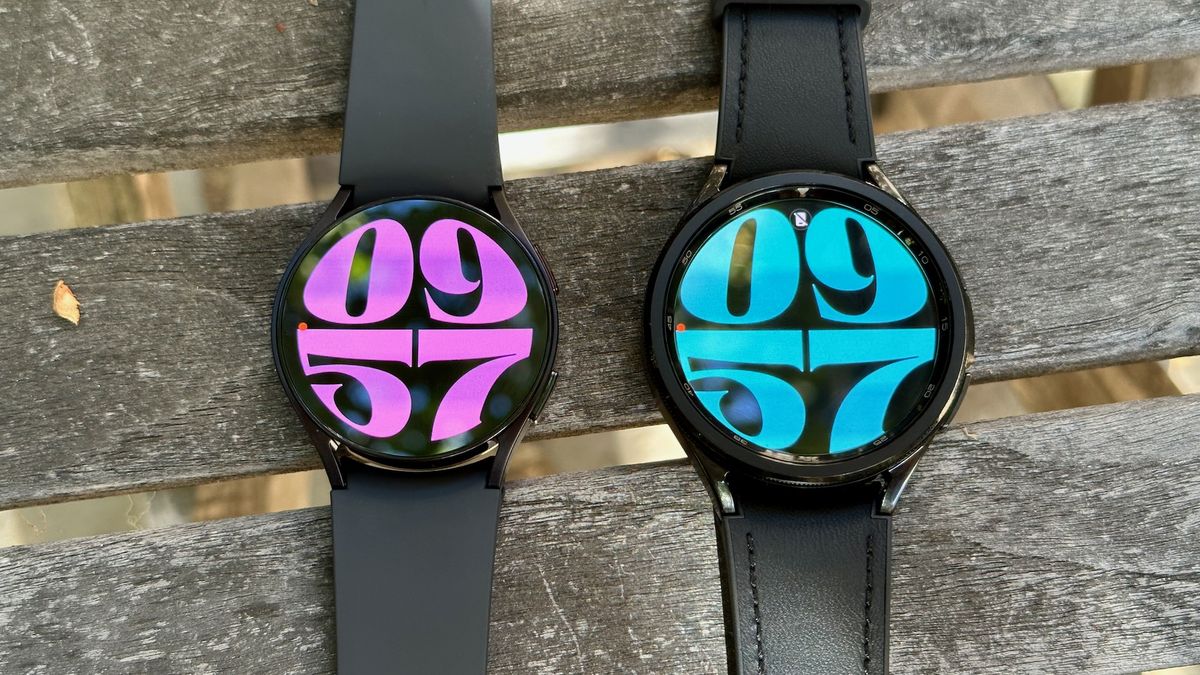

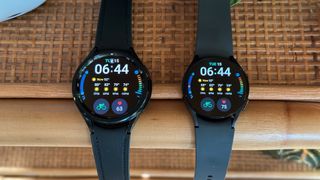
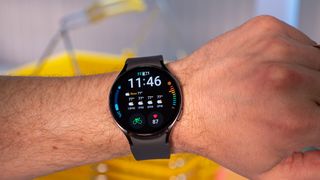
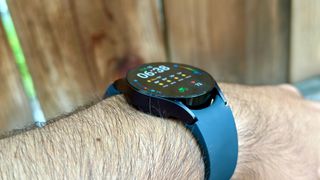
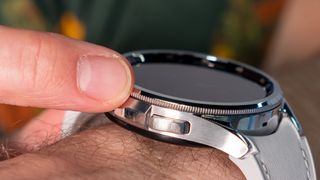
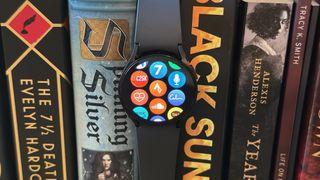

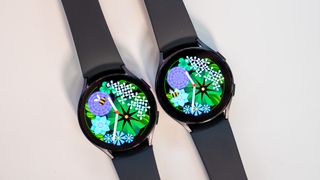
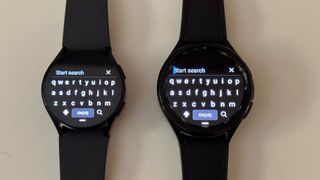
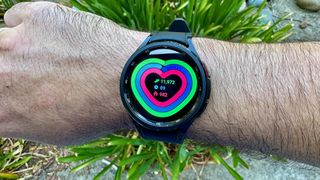
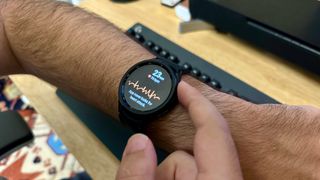
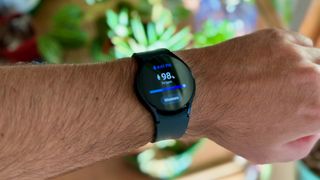
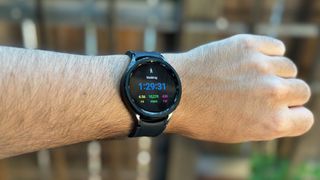
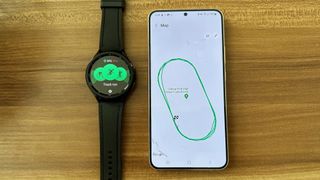
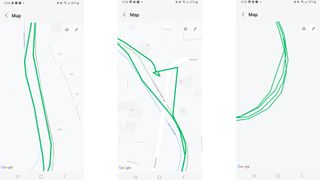
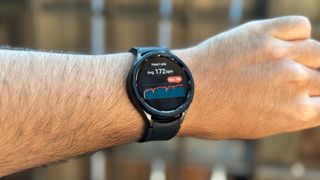
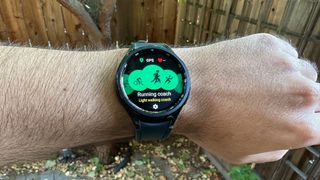
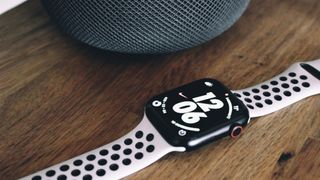
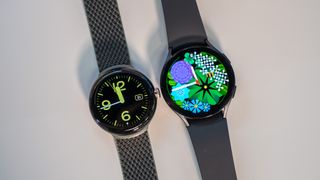
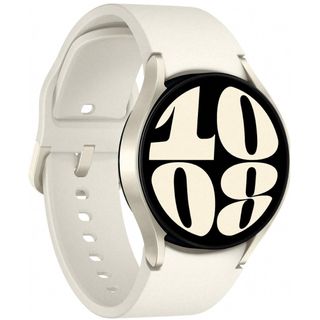









Discussion about this post